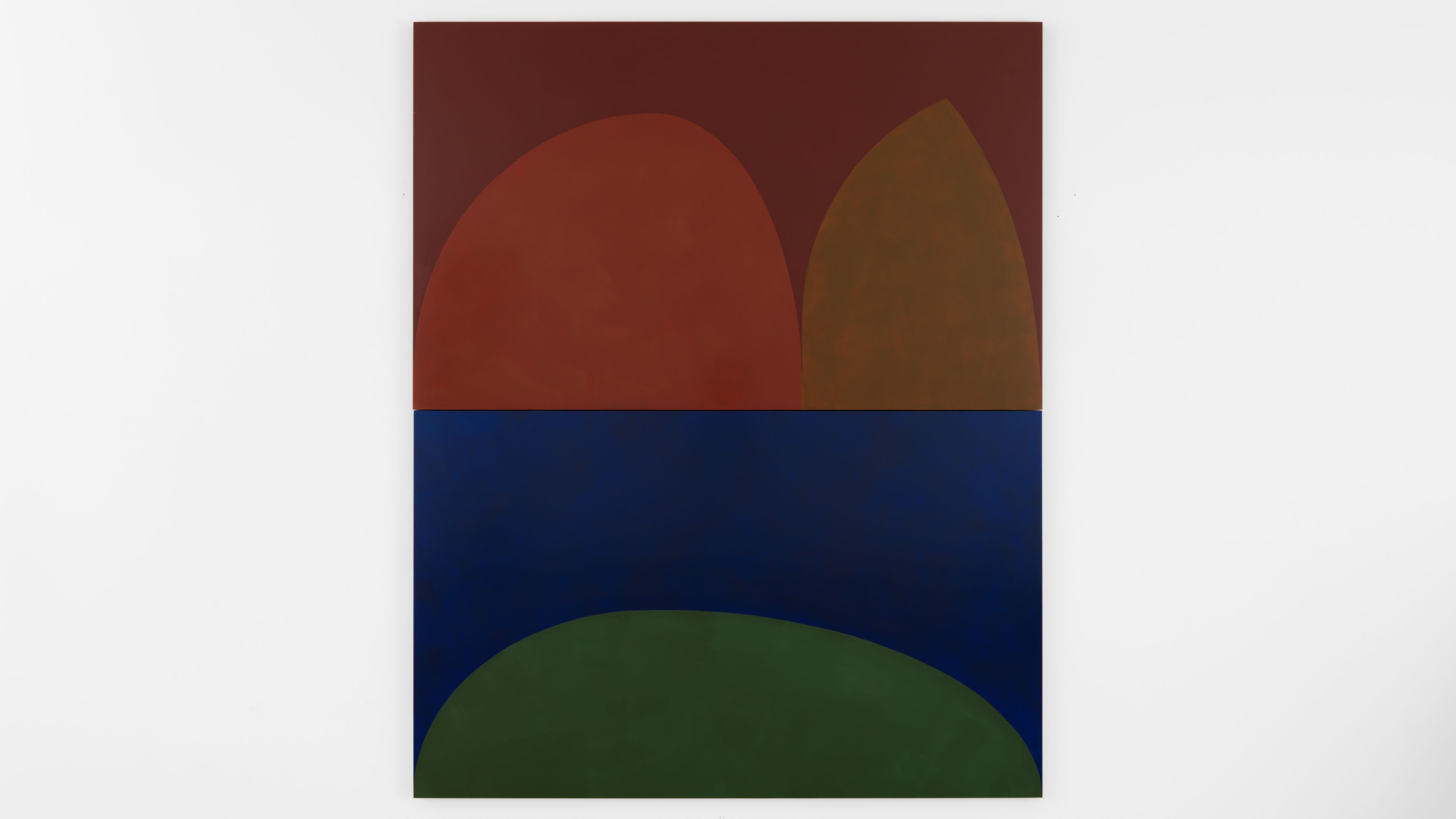Suzan Frecon Reviewed by Stephen Westfall
February 2018
THE LARGE PAINTINGS Suzan Frecon recently exhibited at David Zwirner Gallery in New York revealed themselves slowly. The works were illuminated primarily by the gallery’s skylights, and the quality of light changed with the weather and time of day. To experience the color contrasts between Frecon’s seemingly simple shapes and the fields of color upon which they rested or floated required patience, and even a willingness to return at different times. It seemed nearly sacrilegious to check one’s cellphone under the circumstances, though visitors couldn’t really be prevented from doing so. The exhibition demanded a certain kind of attentiveness, one that could be at odds with modes of behavior common in contemporary life. To be fully present with Frecon’s paintings, one had to adjust one’s sense of being in time. Upon making such an adjustment, visitors were rewarded by the revelation of a layer of meaning that subtends the merely retinal: the fullness of Frecon’s paintings could be said to emerge from their illumination rather than to be laid bare by it, and that sense of emergence is something that must be felt in time. The title of poet and critic John Yau’s September 24 review of Frecon’s exhibition in the online publication Hyperallergic, “The Pleasures of Slow Paintings,”1 got me thinking that Slow Painting was an actual stance, an intention and practice shared by other contemporary painters who, without constituting a movement, collectively insist on a phenomenological experience over a connotative one. Since so much contemporary discussion of painting is understandably focused on signification (urgent narratives of identity being an obvious example), the phenomenological aspects of painting by hand are in need of renewed focus. Without resorting to nostalgia, it is necessary to understand how and why a single body working patiently in the studio might achieve moving results that have a distinctly contemporary relevance. The slowness of painting—both in its creation and in its apprehension by viewers—is routinely overlooked because it is so often taken for granted. Compared to digital media, painting is always slow. When painters seek to speed up the medium—offering quickly rendered “fast takes”—they are often doing so to self-reflexively critique art’s commodification. In Richard Prince’s work, for example, this fast take can be read as a deliberate strategy to reveal the problematic nature of viewing painting under the deadening realities of contemporary capitalism—a realization that supposedly prompts further thought. But it feels deflationary with respect to the multiple levels of the experience of time that painting may address.
